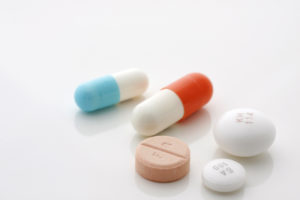
If your community health clinic (CHC) participates in the 340B drug program, changes to the reimbursement rate may affect your bottom line in 2018.
In November 2017, Centers for Medicare and Medicaid Services issued updates to the 340B program’s reimbursement rates, adjusting it to the current rate – 22.5 percent less than the average sales price – from the previous reimbursement rate (sales price plus 6 percent) leading to a 28.5% reduction in reimbursements for some clinics and health systems. Rural sole community hospitals, certain cancer hospitals, and children’s hospitals will, however, be exempt from the reductions. Historically, clinics that qualified for 340B could purchase outpatient drugs directly from the manufacturer or through their distributors at reduced pricing, to save on drug costs and allocate their funding towards other budgetary needs. Revenue generated from the 340B drug program helps clinics, which provide services to underserved population, stretch their limited resources, as Medicaid reimbursements for services rendered do not cover their operating costs.
One area where clinics will feel the impact of updated reimbursement rates is through the pharmacy. Facilities that have a profitable on-site pharmacy, based on the prior reimbursement model, now may have challenges breaking even. Facilities that use a contracted pharmacy (like Walgreens) will also be impacted by a proposed change, in which a clinic will only be able to select one contracted pharmacy instead of having the choice of multiple contracted pharmacies. If a patient doesn’t fill a prescription at that specific contracted pharmacy, the facility won’t receive the reimbursement.
CHCs might be impacted by changes at the state level as well. For example, in California, a bill was introduced that would require community clinics to bill for Medi-Cal services in such a way that the program savings would benefit the state rather than the clinic. If this were to happen, clinics would be forced to eliminate programs benefiting millions of patients. If passed, the bill is set to go into effect July 1, 2018.
While facilities may face multiple 340B-related challenges going forward, there are a few ways to mitigate the effect of reimbursement changes.
Verify all facilities are properly enrolled
One of the first steps to finding savings is making sure your organization is not paying full retail price by ensuring that all qualified facilities are properly enrolled in the program. Something as simple as a wrong address can result in paying significantly more for outpatient drugs. Contact the Health Resources and Services Administration (HRSA) to confirm that all locations are rostered correctly.
It’s also worthwhile to compare your options with pharmaceutical providers, as each of their service fees will vary. If a clinic is purchasing $2 million in outpatient pharmaceuticals annually, saving even a half percent on service fees will result in substantial savings.
Understand the full spectrum of benefits from your GPO
Many think that participating in a GPO automatically provides best pricing for services. But in reality, there are different tier levels of service that are available to a GPO client and many suppliers have access to multiple GPOs, one of which might provide greater incentives or rebates. Ask your current suppliers what options are available that might be a better fit for your clinic’s needs.
Consider generic alternatives
Another way to find savings is from within your medical supply purchases, especially if you consider what generic supply options would work for your clinic. Many generic medical supplies, such as bandages or needles, are often made in the same factory as brand name products but have different packaging. If you find generic options that your staff are happy with, it could help streamline purchasing costs.
Seek a third-party perspective
Facilities also can find savings from within other cost areas, such as medical waste, however it can be difficult to decipher the bill. A third-party with knowledge in this industry can help you determine where savings can be found and could possibly negotiate better rates on your behalf.
The changes to the 340B drug program will bring new challenges to community health clinics. But taking measures to ensure you are getting the most value from participating in the 340B drug program and from your GPO and suppliers, you can find the means to hedge the impact to your clinic.